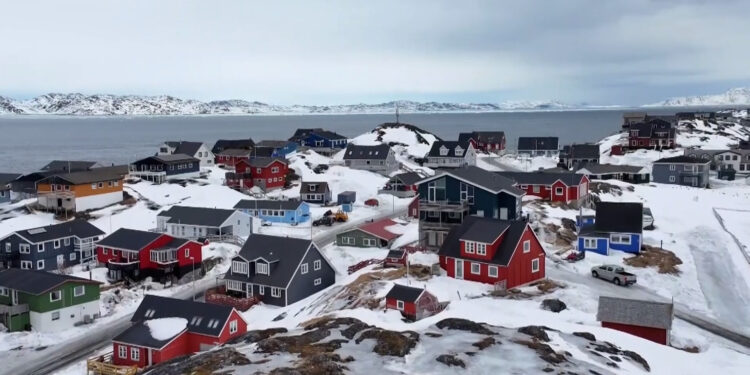In the far north of the Earth, Greenland turned from a remote island inhabited by silence into a theater in which geology intersects politics and isolation with ambition, amid international ambitions that fight its virgin nature and inherent wealth.
In a special investigation within the series of Al -Jazeera reports on global competition for rare minerals, the channel correspondent, Mohamed Al -Baqali, accompanies the heart of this remote island, to reveal details that are narrated for the first time about the minerals buried under the ice, which turned into a axis of competition between major countries, led by the United States and China.
These minerals are lithium, cobalt, and uranium, which today is the beating heart of future industries, which is the new fuel that ignites political geography conflicts.
Speaking to Al -Jazeera, the sailor “Eric Palo Shikopsen” remembers the moment in which his life turned, when the geologists turned it on gold bacartesever near his place of residence.
The beginning seemed to him like a pink dream: “I thought I would become rich,” he says, and his tone has a sorrow tone. But, like Greenland, fell into the trap of illusion.
A returns is not worth
“Chicopon” has already discovered gold, but he realized that its returns did not exceed one dollar per hour, so the treasure was not the same as its imagination … but the curse of the “gold fever” that turned his knife into fear and obsession.
This story, despite its privacy, is repeated in different details throughout the island. Global interest in Greenland is not only due to its natural beauty or Vikical history, but also to the minerals that its mountains are hidden used in the manufacture of electric cars, clean energy technology, and modern defense systems.
This makes the question that Al -Baqali posed to the chief geologists Thomas on a very stormy day: What makes these minerals rare? And why do you raise all this international competition?
Thomas simply answered the confident world: “The scarcity is not in its number, but rather the difficulty of extracting it, and in the environmental and political cost of that.” Rare minerals are present in multiple places around the world, but Greenland has more than the quantity: it has quality, diversity, and most importantly, the appropriate geopolitical time.
However, that wealth is not without consequences. While the major governments aspire to extend their influence inside the island, the locals fear that their land will turn into a new victim of a world that knows only the language of interests.
Internal division
It seems that the position of the indigenous population, who lived for centuries on the sidelines of these wealth without interfering with them, began to witness an internal division, while some see in foreign investments an opportunity for the economic renaissance, others warn of an environmental catastrophe and a threat to their cultural identity.
This controversy intensified when US President Donald Trump expressed his public desire to “buy” Greenland from Denmark, and the idea surprised the world, but it was not merely a political joke.
The American administration at the time was driven by a strategic vision that looks at Greenland as a key to rare resources, and as a geopolitical bound point in the North Al Qorsi, where countries are racing to extend influence in the frozen areas.
The scene is not complete without referring to China, which in turn entered the competition line, offering generous offers for exploration and mining, but the island, which seeks to preserve its accurate balance, finds itself a besieging between the major powers, while its peoples view this conflict with some suspicion and sorrow.
“We do not want to take advantage of,” says one of the local residents who adds: “We want real development, our environment and culture preserves, and do not make us tools in the adult game.”



